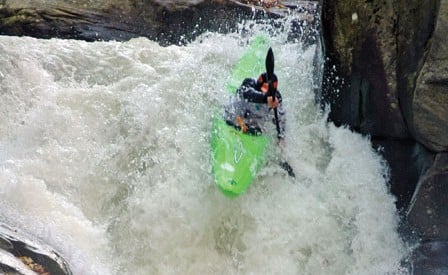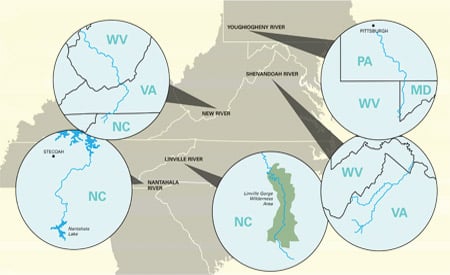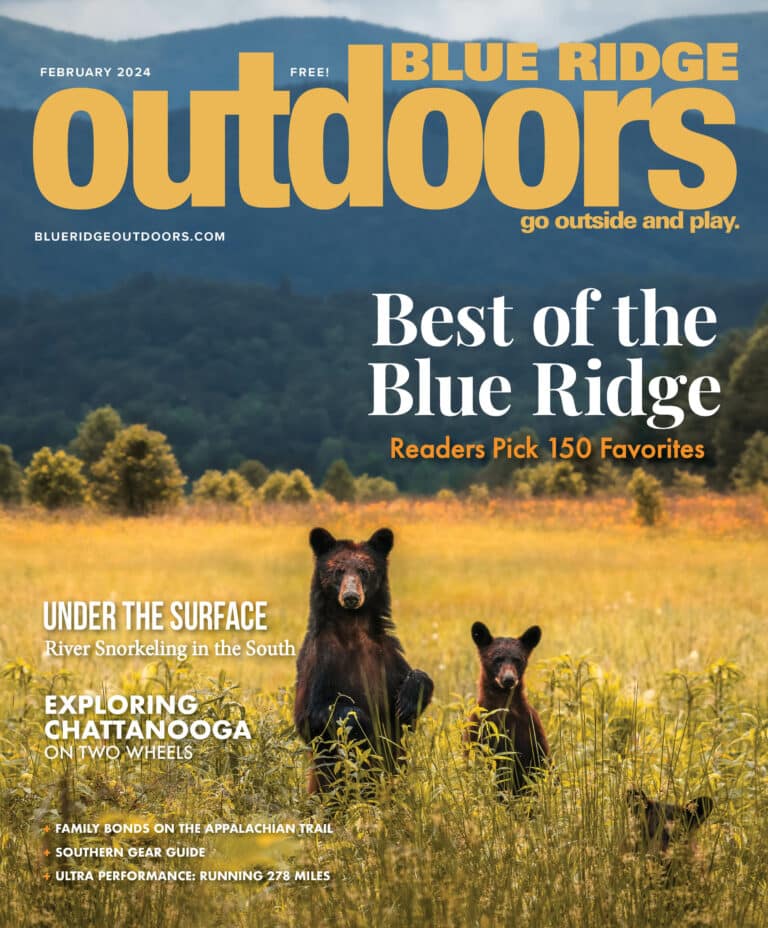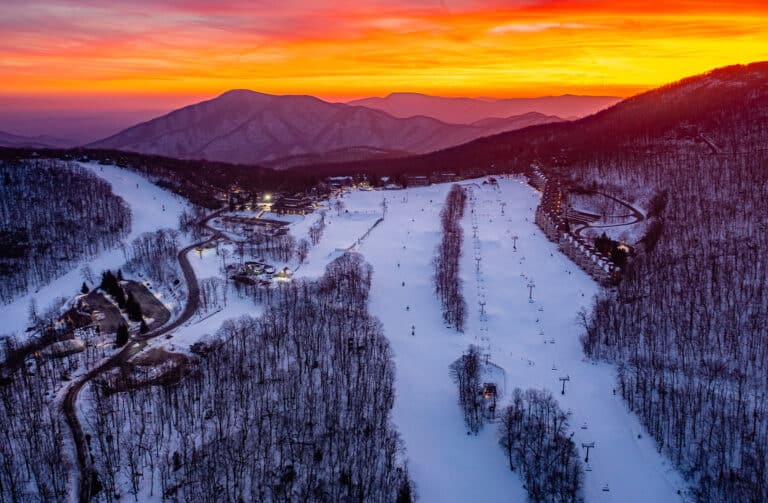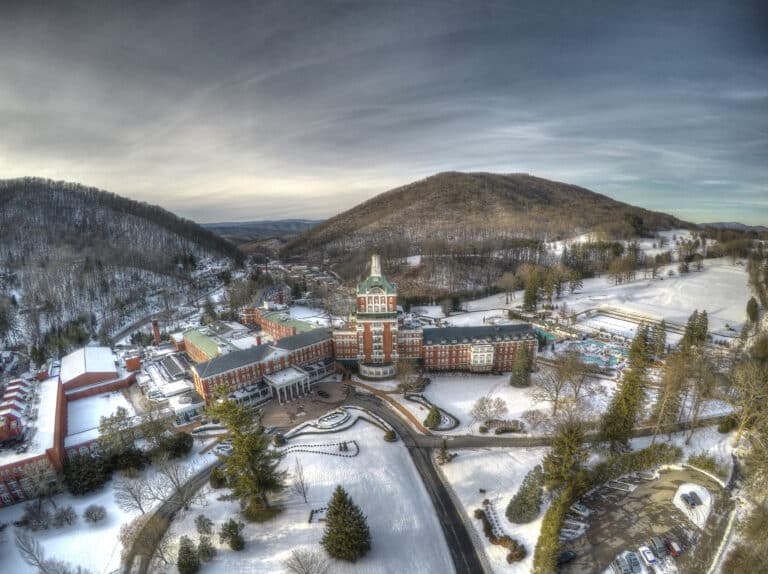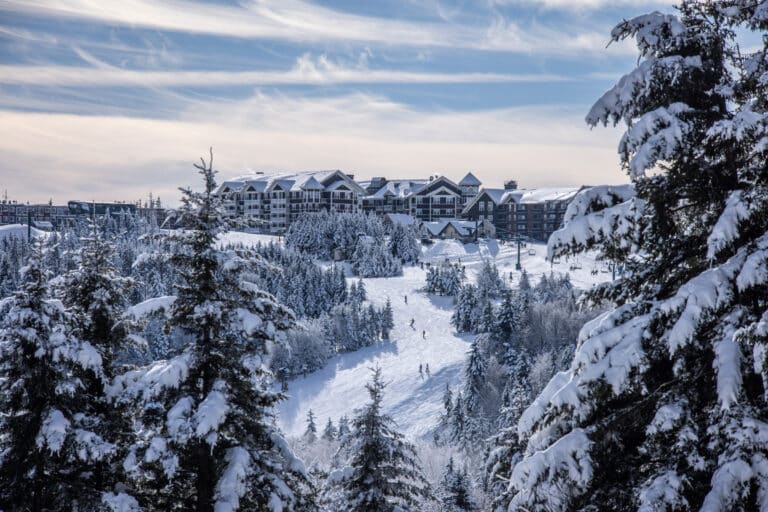Plan this summer’s adventures with our guide to the best rivers in the Southeast. Grab your kayak, canoe, SUP, raft, or inflatable kayak and get wet on these scenic stretches of river.
CLASS I
Shenandoah River, Va.
For a scenic float down a cool river, head to Shenandoah. The beauty here is the perfect antidote for a long week cooped up in a cubicle.
The South Fork of the Shenandoah treats the novice paddler to riffles and waves, with plenty of pools to work on the forward stroke and simply enjoy the views of the Blue Ridge Mountains. The nine-mile stretch starts at Inskeep Landing and ends at Foster’s Landing. The river is wide and, in the summer, can become quite shallow. If it hasn’t rained recently, consider floating down the river in a tube instead of a canoe.
The river is chock full of bass, sunfish, and catfish, so bring a fishing pole and remember that Virginia requires a fishing license.
Fun fact: Legend has it that a few miles from the Shenandoah River near Harper’s Ferry, there’s a cave once used by Confederate troops to hide from the Union cavalry during the Civil War.
When to go: For higher water, go during spring flows. The summer is perfect for tubing.
Shuttle: Put-in at Inskeep Landing, located off Route 684 on the left bank of the river downstream of the bridge. Ample parking is available. Takeout is approximately nine miles farther down off Route 684 on the left bank of the river.
Beware: If using Inskeep as a takeout from a float originating upstream, there is a mandatory portage around a low-head dam. Also keep in mind that other than the designated access points operated by Virginia Department of Game and Inland Fishers, the banks of the rivers are private property.
Best Beer Nearby: Jack Brown’s in nearby Harrisonburg, Virginia has close to 100 different beers. The burger joint also dishes up fried Oreos for dessert. Bras hang from the chandeliers, and a deer head donning scuba gear rounds out the décor.
Best of the Rest
For those whose kayaks haven’t seen much action all winter, these stretches provide the perfect opportunity to brush up on paddling skills. For a great wilderness float, head to the Greenbrier River in West Virginia. The Greenbrier is also a great fishing river with ample riverside campsites.
North Carolina offers ample runs perfect for the beginner paddler. The Roanoke River is a three-mile stretch that’s mostly flat with one Class II rapid, aptly named “The Rapid.” For a step up, the Tuckaseegee River’s pool-drop rapids provide beginners with loads of recovery time between rapids. The South Toe can’t be beat for a splashy ride through sparkling emerald water. Originally named the “Estatoe River” after a beautiful Native American maiden, the river’s name has since been shortened to simply “Toe.” The Yadkin River boasts a 165-mile long canoe trail with thirty-eight different access sites. After a good rain, the Davidson River is a scenic paddle with Class I and II rapids, but be on the lookout for trees. On the hottest summer days, grab a bikini or board shorts and head to Deep Creek in Bryson City for some of the South’s best tubing. Put-in options abound, and the higher the put-in, the more adventurous the ride.
CLASS II
Nantahala River, N.C.
On any given summer day, a parade of rafts, kayaks, and canoes float down the river. Recently, more stand up paddleboards have been added to the mix. And there’s been at least one spotting of an inflatable pool.
The Nantahala, the classic Southeastern run for beginner paddlers, is within the Nantahala National Forest and near Great Smoky Mountains National Park. The stretch of river contains over twenty named rapids. Right after putting in, paddlers are put to the test with a Class II+ rapid, Patton’s Run, and the fitting climax is Nantahala Falls, just above the take-out.
The Nantahala is one of the most rafted rivers in the country. The scenery provides reason enough for most to want to enjoy the river. The entire run is roadside, but from the hull of a kayak the road is difficult to discern. Instead, paddlers are treated to views of the tree-covered ridges of the Nantahala Gorge. Tulip poplar, sycamore, and beech trees line the river.
Besides the scenery, the Nantahala is a good training run. Relatively safe, plenty of opportunities to play, and dependable releases make the river a sure bet. The river is so playable that the 2013 Freestyle World Championships were held on the Nantahala.
Fun fact: The word “Nantahala” comes from a Cherokee word meaning “midday sun.” The sun doesn’t reach deep in the gorge until noon time. The lack of sun, coupled with the forty-five degree dam-released water, means that paddlers need to dress warmly even in the summer.
When to go: The Nantahala usually runs seven days a week.
Shuttle: Park at the Nantahala Outdoor Center and catch a shuttle to the put-in for a small feel. Shuttles run hourly from April through October. For those wanting to add a jog to the day, some paddlers forge a path along the railroad tracks and riverside to the put-in.
Beware: Just downstream of the take-out is Lower Nantahala Falls, a Class V rapid. The sharp blasted rocks make this a rapid in which paddlers don’t ever want to be upside down, so unless you’re up for the challenge, make sure not to miss the takeout.
Best Beer Nearby: Head to Nantahala Brewing Company in Bryson City to celebrate a fun day on the river. The local brewery’s craft brews include Noon Day IPA, App Trail Extra Pale Ale, Bryson City Brown, Dirty Girl Blonde, and Up River Amber.
Best of the Rest
There’s no shortage of quality class II runs. In West Virginia, the North Fork South Branch of the Potomac treats paddlers to fantastic views of the North Fork Mountains and Spruce Mountain. Farther south in the state, the Bluestone River offers paddlers a protected unspoiled river, surrounded by the lush, temperate rain forest. At times the river flows through a rugged gorge and the rapids range from Class II to Class III.
Virginia paddlers don’t have to go far to practice their strokes. The Dan River provides paddlers with a creek-like feel. Paddlers looking to challenge themselves can put-in higher for a few Class III rapids. Otherwise, paddlers should put-in at the parking lot below the first bridge. The James River, a 2.5-mile run with a few Class III rapids, flows right through Richmond. This means that those who live and work in the city don’t have to travel far to paddle. They do, however, have to contend with urban hazards like low-head dams and rebar. Another Virginia favorite is Charlottesville’s Rivanna River, protected as a Virginia State Scenic River. For solid Class II paddlers ready for more whitewater adventure, the Motts-Run-to-Fredericksburg section of the Rappahannock River offers almost five miles of Class II+ rapids.
Tennessee favorites include the Watauga and Obed Rivers. The upper section of the Red Roof Run on the Watauga above the dam is easy Class II with plenty of time in between rapids. Below the dam, the nature of the run drastically changes to technical and continuous Class IV rapids. The Obed River located in the Cumberland Plateau flows some 400 feet deep through a sandstone gorge. No commercial outfitters run the river, so paddlers have the gorgeous scenery to themselves. Class II paddlers will enjoy putting-in at Potters Ford and paddling to Obed Junction where Daddy Creek flows into the river.
Beginner North Carolina paddlers should check out the Little Tennessee, the Oconaluftee, and the French Broad. The free-flowing Little Tennessee River ends with a bang when the Class III rapid is in play (only after a good rain). The Oconaluftee is a short 3.2-mile run with one Class III rapid, “Elbow,” so named because the cleanest line resembles the zig-zag of a bent elbow. Proficient Class II paddlers should consider the Barnard to Stackhouse section of the French Broad, where the wide river provides paddlers with easier lines to negotiate some of the Class III rapids.
The Cartecay River in Northern Georgia, provides paddlers and tubers a chance to stay cool in the heat of summer. The river flows through Ellijay, Ga.
Vote for your favorite river on our list
CLASS III
Lower New River, W.Va.
The New River gorge provides reason enough for West Virginia to claim “Wild and Wonderful” as the state motto. The rugged nature of this free-flowing river, with its boisterous rapids walled in by tall tree-lined canyons, completely immerses paddlers in the moment. As the river winds way through the wooded canyon nearly 1,000-feet deep, the leisurely pools between rapids provide paddlers a brief respite from the action.
At summertime levels when the river runs at negative levels, the lower New River Gorge is the perfect run for the eager intermediate paddler. The seven mile stretch of river from Thurmond to Fayetteville Station contains dozens of mostly Class III rapids.
The New River is a big-volume, wide river that can be run at many levels. The New River is free-flowing, which means spring often brings the highest water levels and by late summertime, the levels drop, resulting in smaller rapids. At levels above two feet, intermediate paddlers will want to be with experienced paddlers who know the lines well, especially for the Kenneys, a series of three rapids, and Double Z. Paddlers without big water paddling skills should stay off the river above six feet, when the swims become longer and both the number and size of eddies decrease.
Fun fact: The name “New River” is actually a misnomer—it’s the oldest river in North America. It’s also one of only a handful of large rivers in the world that flows from south to north.
When to go: The season is April through October. The highest water levels and wildest rides occur in spring.
Shuttle: The take-out is at Fayetteville Station. From Fayetteville, take Route 19 to WV 82 down to the river. To get to the put-in, take Route 19 to Main Street in Fayetteville. Drive through town and take a left at the fork in the road just past the convenience store. Follow signs to Cunard. A local paddle shop, ACE Adventure Gear, offers a free Wednesday night shuttle service. Meet at Fayette Station at 5 p.m. ready to load gear and boats onto the bus. The bus drops paddlers off at the put-in. The free shuttle is a great way to meet local paddling partners.
Beware: Some rapids contain hazardous undercut rocks.
Best Beer Nearby: Pies & Pints Pizzeria off Main Street in Fayetteville offers a great selection of beer, along with, you guessed it, some great pizza.
Best of the Rest
From Pennsylvania to Georgia, the region provides abundant paddling opportunities for the intermediate paddler. The Lower Yough in Pennsylvania, considered one of the busiest sections of whitewater in the East, flows through Ohiopyle State Park. The nearby Savage River provides five miles of continuous Class III whitewater within the Savage River State Park. Paddlers who catch one of the dam releases boat past some of the last remaining old-growth forests in Maryland. The Savage River was also the site of the 1989 Kayaking World Championships.
Besides the New River, West Virginia boasts the Cranberry, a classic creek run through wilderness terrain. With plenty of Class III+ ledges and boulder gardens to navigate, paddlers should have a combat roll before paddling the Cranberry. For paddlers who enjoy eddy-hopping, the Williams provides paddlers plenty of chances to move from eddy to eddy as they paddle down the narrow creek.
North Carolina paddlers flock to the Pigeon River. Interstate 40 provides easy access to this mostly roadside run, although from the seat of a kayak, a boater sees only the surrounding Cherokee National Forest. Another favorite southeast river that straddles the North Carolina/Tennessee border is the Ocoee. The Middle Ocoee is perfect for the advanced intermediate. The put-in, at the base of the dam, give paddlers little chance to warm-up before tackling the first rapid, which is a long and continuous Class III+ rapid named “Grumpies.” The rest of the run is full of roller-coaster-like big waves.
Tennessee’s Big South Fork is big water fun well worth a drive to the Cumberland Plateau. Winding through the rugged cliff lined gorge gives this run a real wilderness adventure tone.
Head to North Georgia to paddle the Chattooga, made famous by the movie Deliverance. The movie opened in 1972. Roughly 800 paddlers used the river in 1971. By 1973, 21,000 boaters logged river time on the Chattooga. Section III of the Chattooga provides the intermediate paddler with Class II and III rapids. Midway down, class-V Bull Sluice juices things up a bit. Bull Sluice is easy to portage.
CLASS IV
Upper Youghioghny River, Md.
The combination of predictable summer releases, continuous and technical rapids, and easy shuttle logistics make the Upper Youghiogheny a paddling gem. Locals refer to the ten-mile stretch of river from Sang Run to Friendsville as the “Upper Yough” (hint, it sounds like “Yock”).
The paddle begins with two miles of flattish water, perfect for taking in the scenery. Designated as Maryland’s only Wild and Scenic River, dense green forests border the water’s edge. The banks are abundant with ferns, honeysuckle, rhododendrum, blooming tiger lilies and shockingly bright red cardinal flowers during various times of the summer.
The character of the river changes at mile two. Class III rapids known as the warm-ups replace the flat water. If this section leaves you gripped, you might want to consider hiking back to the put-in before the real action starts.
Next, the aptly named “miracle mile” starts, starting with a rapid named “Bastard” and ending with “National Falls.” The river drops over 120 feet during this mile and there’s little break in the action. The intensity of the rapids doesn’t stop until mile seven, when the river resumes a gentle nature with mostly Class I and II rapids.
Fun fact: Friendsville is named after its first European settler John Friend, who came to the area before the Revolutionary War. Many of John Friend’s descendants live in Garrett County today.
When to go: Class IV paddlers should wait until water levels reach summertime release levels of under two feet. Any higher, and the river gets really pushy. Summertime releases are scheduled for Fridays, Saturdays, and Mondays. Sometimes mid-week releases happen, so catch one if you can.
Shuttle: The Upper Yough runs right through the town of Friendsville, and the take-out is on river left after the bridge. The put-in is at Sang Run, a public Maryland State access field. Note that American Whitewater signed an agreement with the state of Maryland to manage the Sang Run access. Paddlers’ donations keep the port-a-potties clean and the grass mowed, so please be generous.
Beware: Posters displayed all over town read: “Please remember the following activities are offensive and illegal: changing clothes in public view, blocking traffic with boats or bodies, and drinking alcoholic beverages in public. Citations will be issued.” Respect the locals. No nudity or beer drinking in public.
Best Beer Nearby: Nearby Mountain State Brewing Company offers the perfect atmosphere for celebrating a great day on the river. Nestled between picturesque rolling hills, the outdoor seating offers prime sunset viewing. The brewery serves its own beer, along with a big selection of pizza and wraps. The brewery also frequently features live music.
Best of the Rest
Class IV paddlers can pick between low-volume creek-styled runs or big water rivers in some of the most scenic areas of the Blue Ridge. West Virginia’s Cheat Canyon is spring paddling at its finest. The mighty Cheat Canyon remains the largest free-flowing watershed east of the Mississippi and contains ten miles of action-packed rapids.
Every April, paddlers come to the Webster Wildwater Weekend River Festival to race or participate in organized river trips on the Elk River in West Virginia.
Paddlers in Tennessee can be picky—there are many choice Class IV runs throughout the state. The Nolichucky runs through the deepest gorge in the East and gets started right away with several Class IV rapids within the first few miles.
In North Carolina, favorite Class IV runs include the Cheoah, Wilson Creek, and nearby Harper’s Creek. The Cheoah River’s emerald green hued water starts off as Class III and culminates with big Class IV rapids. Be sure to catch one of the fifteen scheduled release days. The California-style rock-slab characterizes Wilson Creek, providing advanced intermediate paddlers with plenty of boof practice. Nearby Harper’s Creek features a massive waterfall in the middle of the run, Harper Creek Falls, that can be hiked and hucked. Many opt to paddle the whole stretch for fun Class III and IV rapids and epic views of the Blue Ridge.
In North Georgia, Section 4 of the Chattooga allows paddlers plenty of warm-up rapids before tackling the more challenging Five Falls section. At Five Falls, paddlers will want to be sure to set safety.
CLASS V
Linville Gorge, N.C.
For one of the most difficult stretches of whitewater in the Eastern U.S., head to Linville Gorge. After a recent rain, the river charges some twenty miles from Linville Falls to Lake James. The river carved a path through the rocks of Appalachia, creating a gorge thousands of feet deep. Linville Gorge is located between the towns of Boone and Morgantown. Over the years, Linville has been dubbed the “Grand Canyon of the East.” The river is at once magical and technical, legendary and demanding, breathtaking and mysterious.
Committing to paddle Linville requires having impeccable paddling skills and being in the zone on a given day. The river is known for its hundreds of rapids, characterized by their continuous, long, and technically demanding nature. A capsize or swim could potentially be catastrophic.
Linville provides paddlers with one horizon line after another. Paddlers don’t have the option of letting their guard down, even in the easier rapids. Sieves and undercut rocks define the river. Huge boulders often punctuate the rapids, and water tends to flow under, instead of around, these boulders. Paddlers tackling Linville must assume they will have no way out due to the remoteness of the run.
If the rapids don’t take a paddler’s breath away, the gorgeous surroundings will. The 11,000-acre Linville Gorge Wilderness Area designation protects both the river and its banks.
Fun fact: The area surrounding Linville was used for filming scenes from The Last of the Mohicans.
When to go: The best runs are after a recent rainfall. Linville is a free-flowing river.
Shuttle: Although Linville is only 45 minutes from Asheville on Interstate 40, plan for the shuttle to take time. There are many options for alternative put-in and takeouts. Most take-out options require a strenuous hike straight uphill that takes most paddlers an hour.
Beware: Shuttle vehicles should have decent clearing and four-wheel drive. The river is hair-raising Class V and should only be attempted by expert paddlers.
Best Beer Nearby: Linville is a true wilderness run. The best bet for beer is whatever’s in the truck at the takeout. Pack your cooler accordingly.
Best of the Rest
Any Class V paddler who’s been to Tucker County in West Virginia will sing the praises of the East Fork of the Blackwater River for stacking up continuous, technical Class V rapids. Adding to the intrigue is the dark hue of the water, so colored because of the leaching of tannins from decaying hemlocks and red spruce that occurs upstream in the slower moving tributaries.
Another favorite is the Russell Fork, located between Haysi, Va., and Elkhorn City, Ky., and celebrated for its sheer beauty. The Lord of the Fork Race is the annual extreme Class V downriver race held there every October.
North Carolina contenders for best Class V runs include the rivers of the Southern Blue Ridge Escarpment that seemingly tumble off the edge of the world—the Horsepasture, Toxaway, and Whitewater Rivers. The long, granite slides often get compared to California paddling. For an adrenaline-inducing serious creek run, put-in at the base of 250-foot Cullasaja Falls and paddle the several Class V/V+ rapids. If you can catch one of the eight scheduled releases, the Cascades of Nantahala is a roadside Class V with rapids with fear-inducing names like “Horns of God” and “Junkyard.” Another classic worth catching is the East Fork of the Pigeon, which can only be accessed from the Blue Ridge Parkway. The pristine water and clean boulder drops make it well worth the effort.
While not one of the most demanding rivers, West Virginia’s Upper Gauley draws paddlers from all over the world. Every fall, the Gauley River hosts the biggest whitewater party. Gauley Fest is held each year in mid-September.
